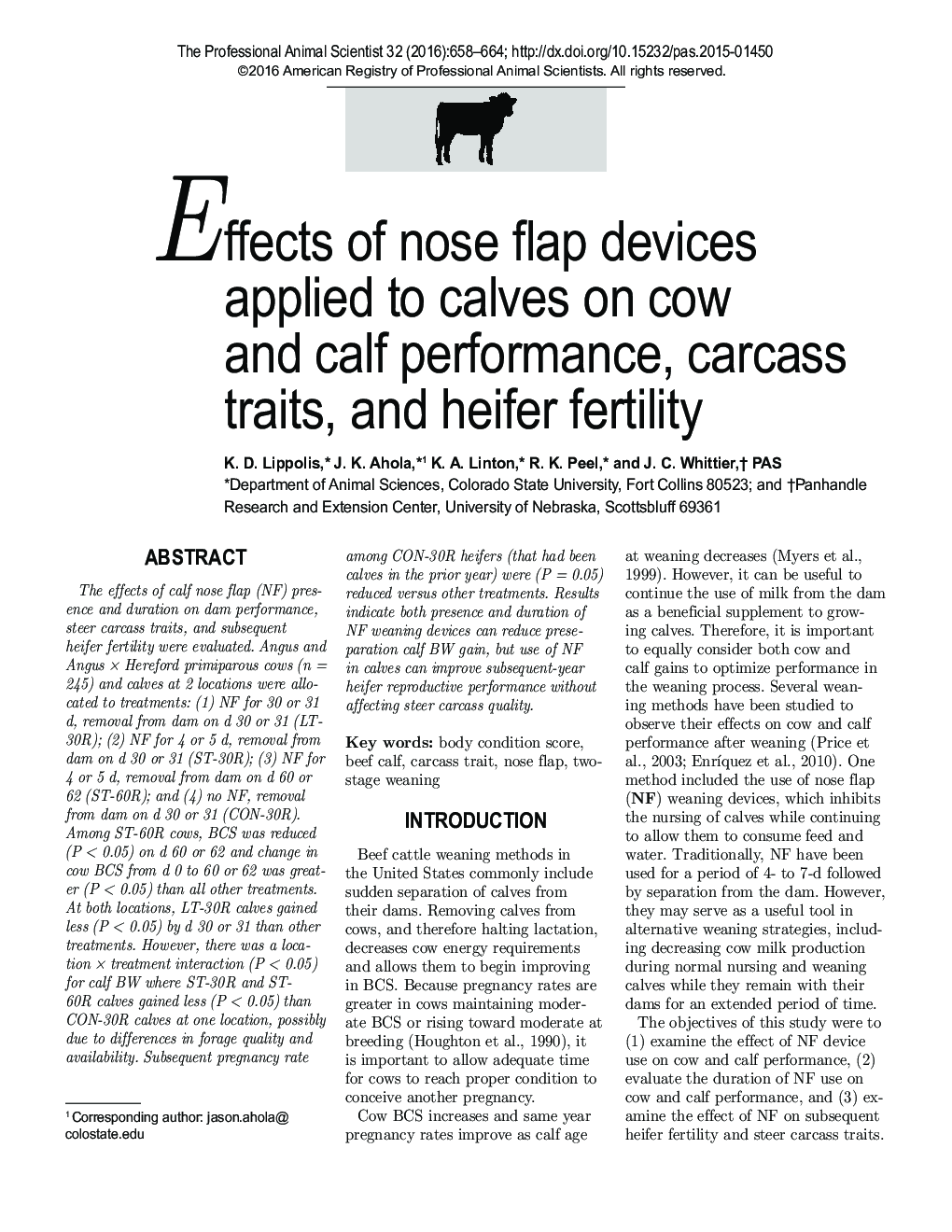| Article ID | Journal | Published Year | Pages | File Type |
|---|---|---|---|---|
| 8503835 | The Professional Animal Scientist | 2016 | 7 Pages |
Abstract
The effects of calf nose flap (NF) presence and duration on dam performance, steer carcass traits, and subsequent heifer fertility were evaluated. Angus and Angus à Hereford primiparous cows (n = 245) and calves at 2 locations were allocated to treatments: (1) NF for 30 or 31 d, removal from dam on d 30 or 31 (LT-30R); (2) NF for 4 or 5 d, removal from dam on d 30 or 31 (ST-30R); (3) NF for 4 or 5 d, removal from dam on d 60 or 62 (ST-60R); and (4) no NF, removal from dam on d 30 or 31 (CON-30R). Among ST-60R cows, BCS was reduced (P < 0.05) on d 60 or 62 and change in cow BCS from d 0 to 60 or 62 was greater (P < 0.05) than all other treatments. At both locations, LT-30R calves gained less (P < 0.05) by d 30 or 31 than other treatments. However, there was a location à treatment interaction (P < 0.05) for calf BW where ST-30R and ST-60R calves gained less (P < 0.05) than CON-30R calves at one location, possibly due to differences in forage quality and availability. Subsequent pregnancy rate among CON-30R heifers (that had been calves in the prior year) were (P = 0.05) reduced versus other treatments. Results indicate both presence and duration of NF weaning devices can reduce preseparation calf BW gain, but use of NF in calves can improve subsequent-year heifer reproductive performance without affecting steer carcass quality.
Related Topics
Life Sciences
Agricultural and Biological Sciences
Animal Science and Zoology
Authors
K.D. Lippolis, J.K. Ahola, K.A. Linton, R.K. Peel, J.C. PAS,
